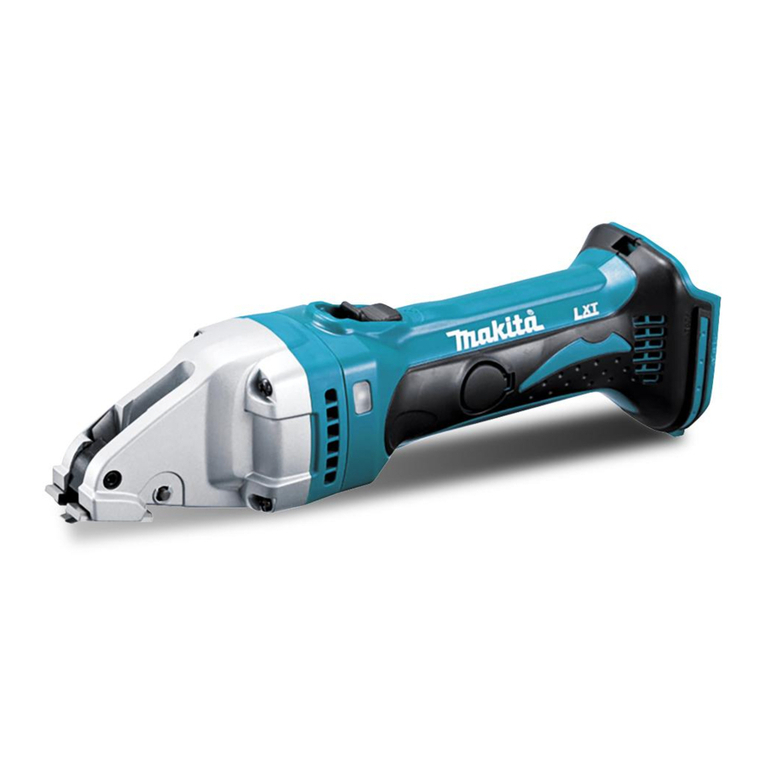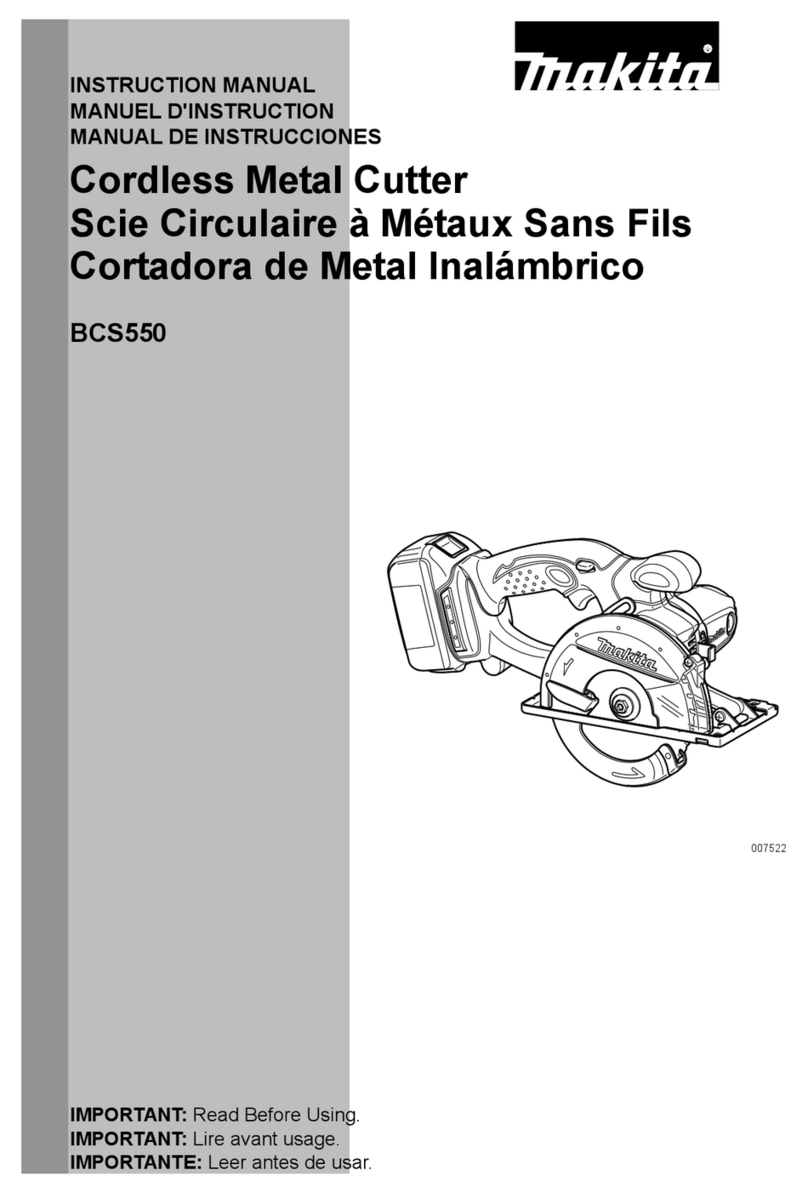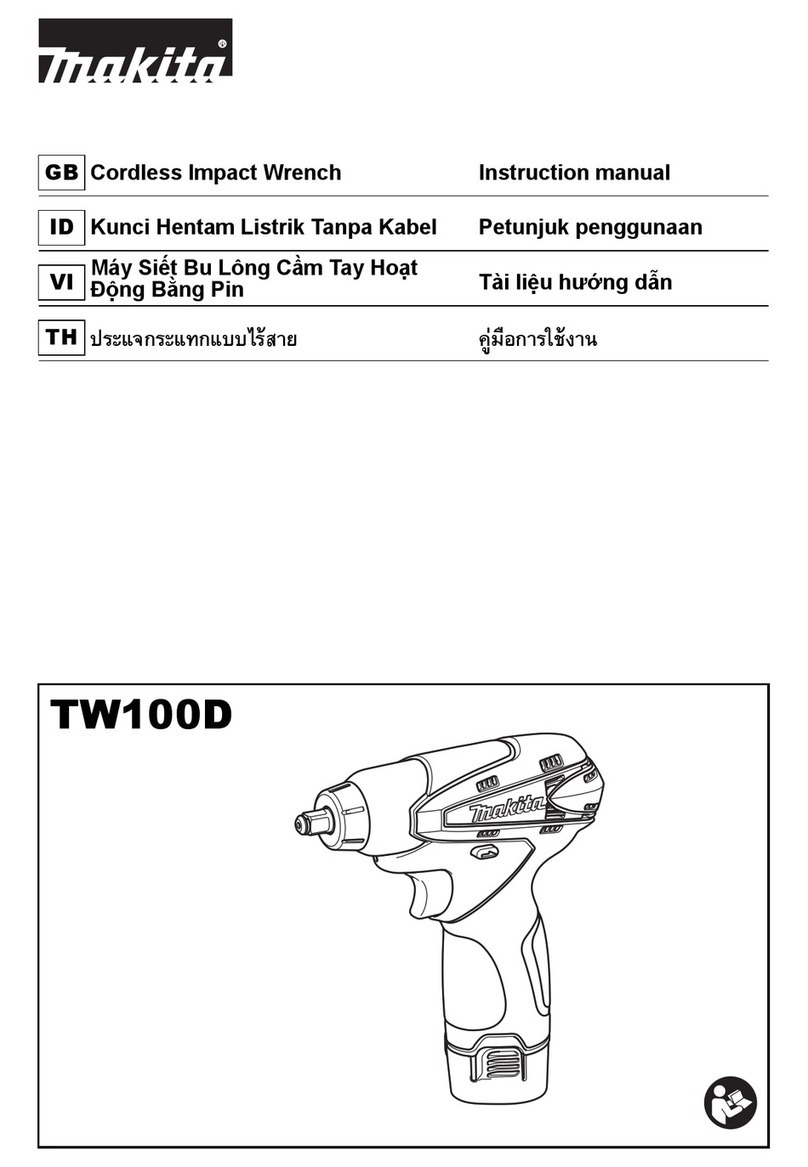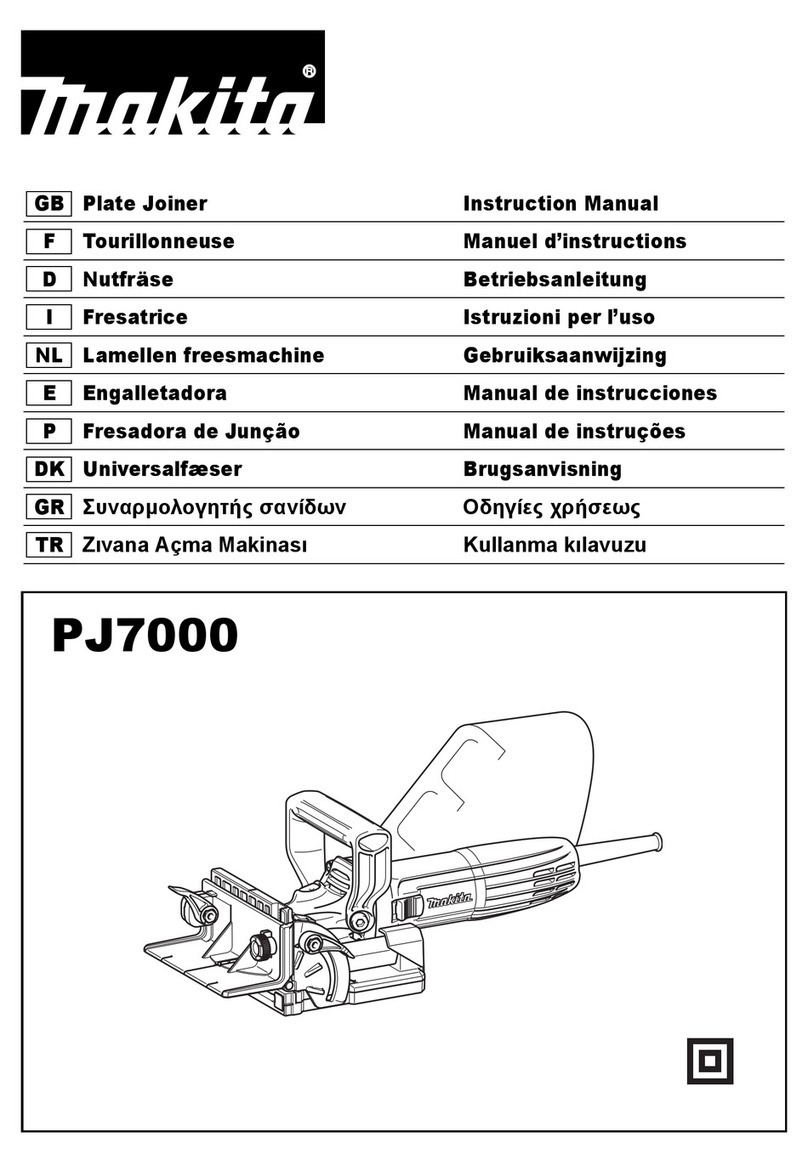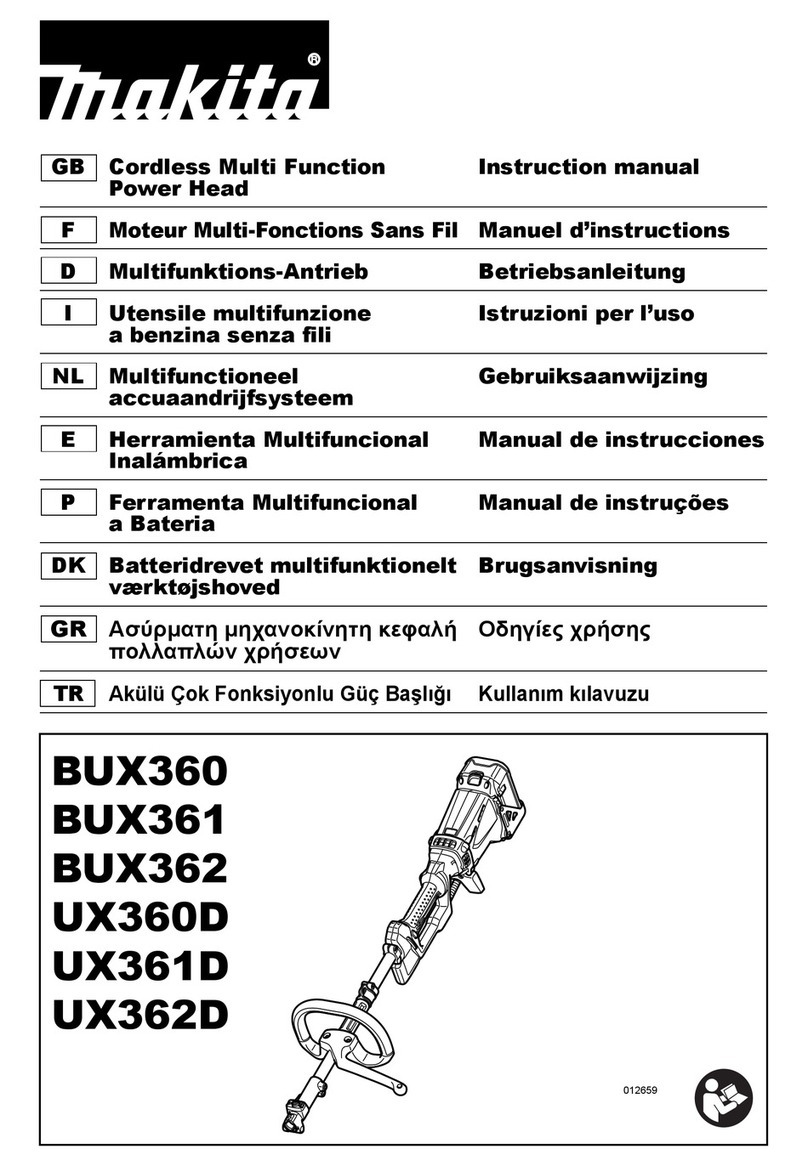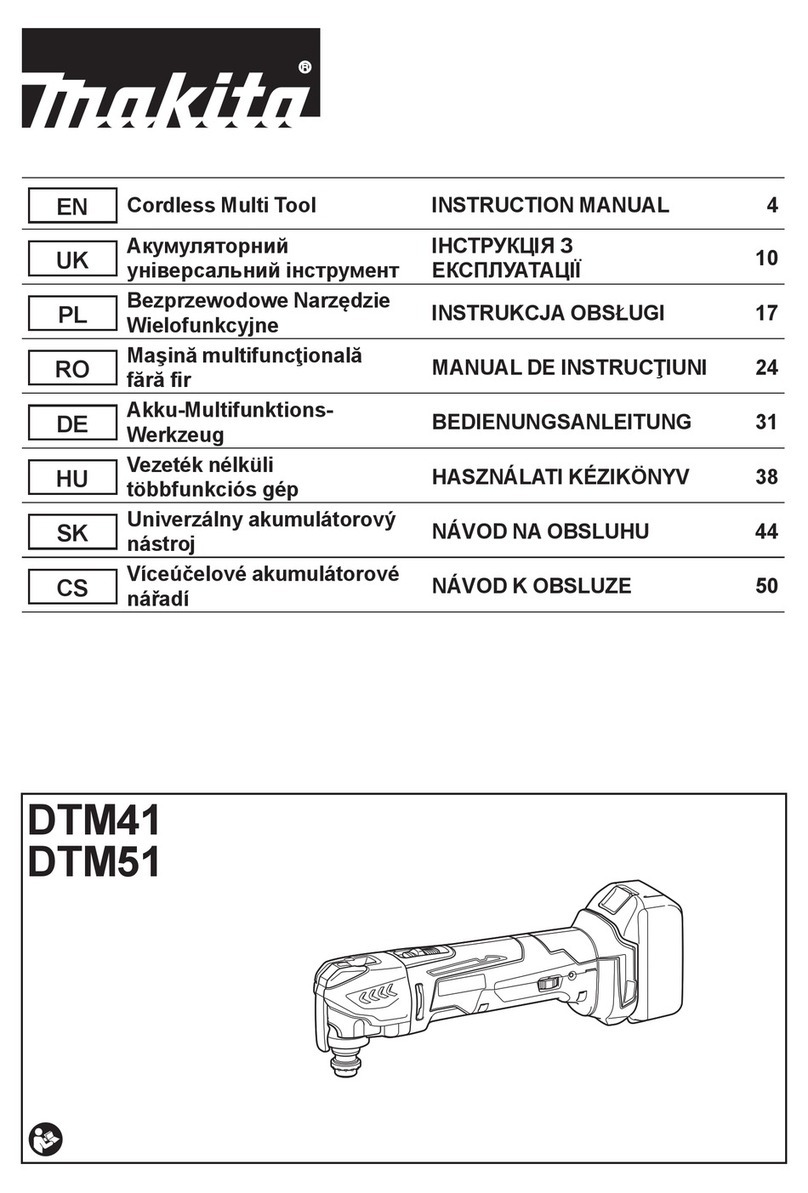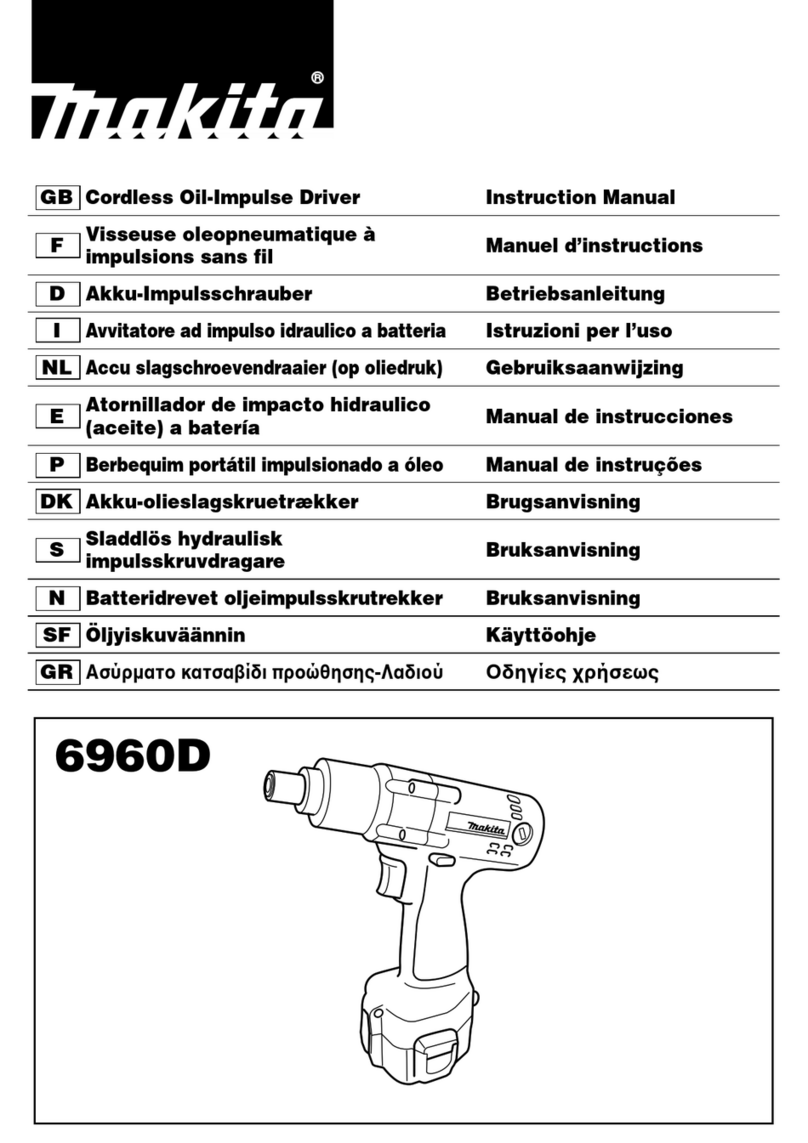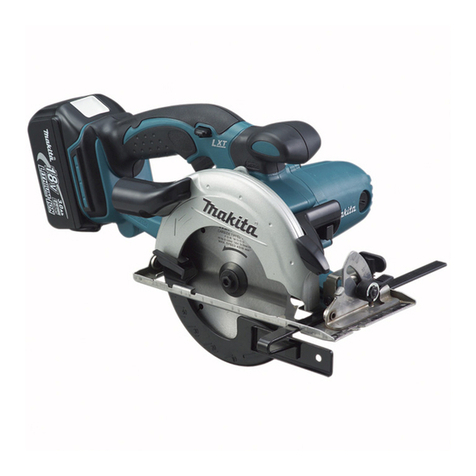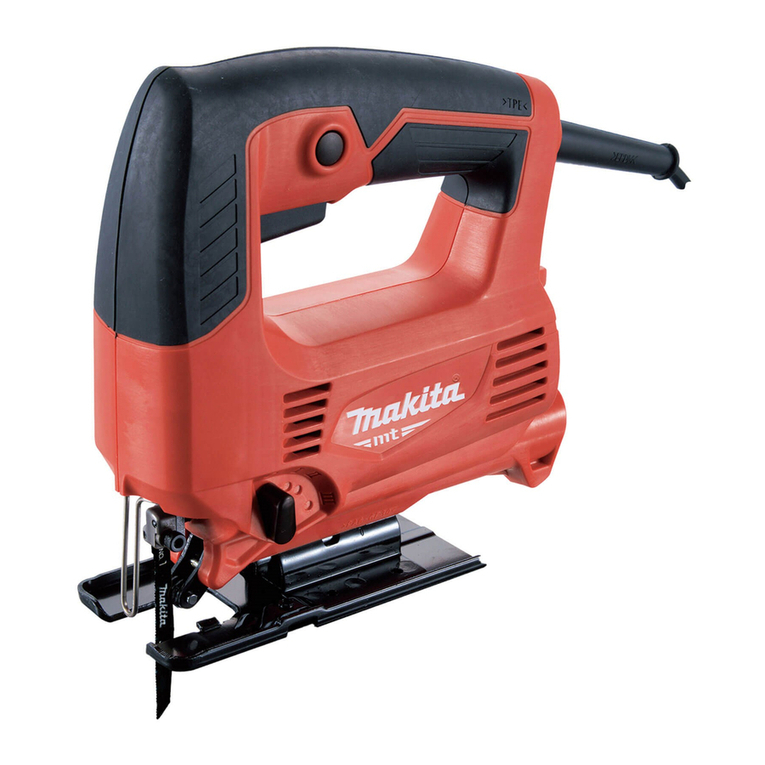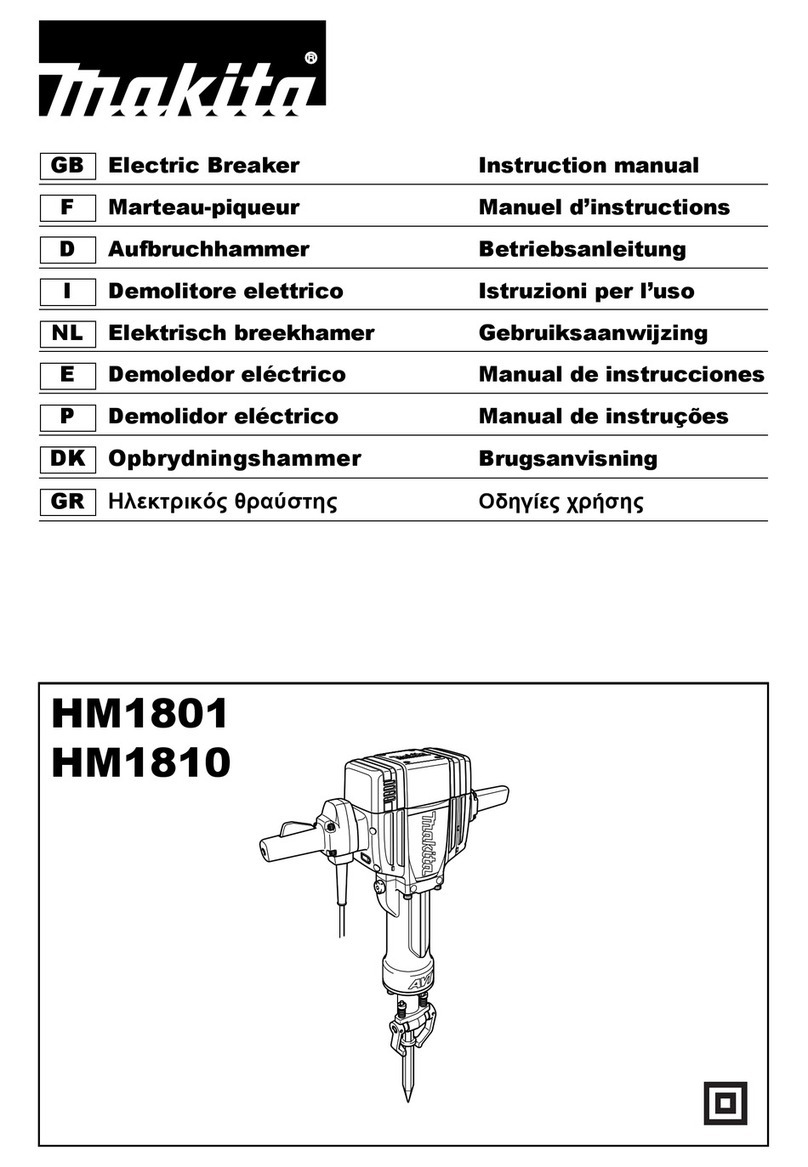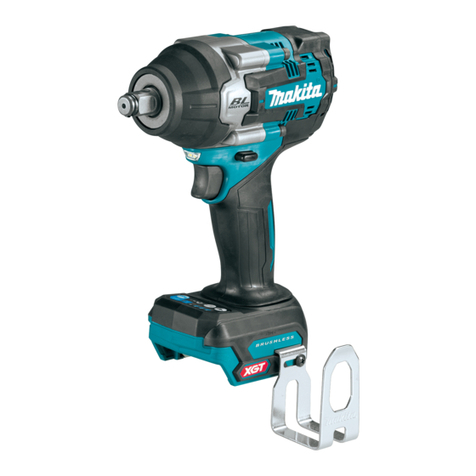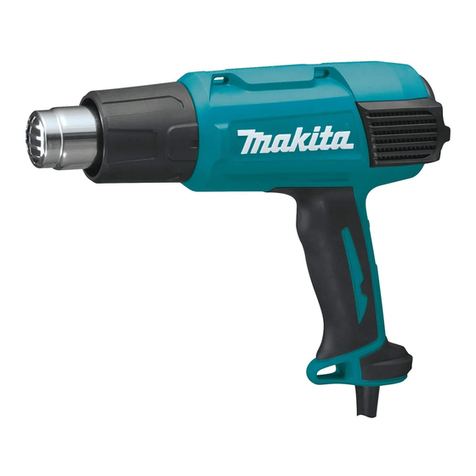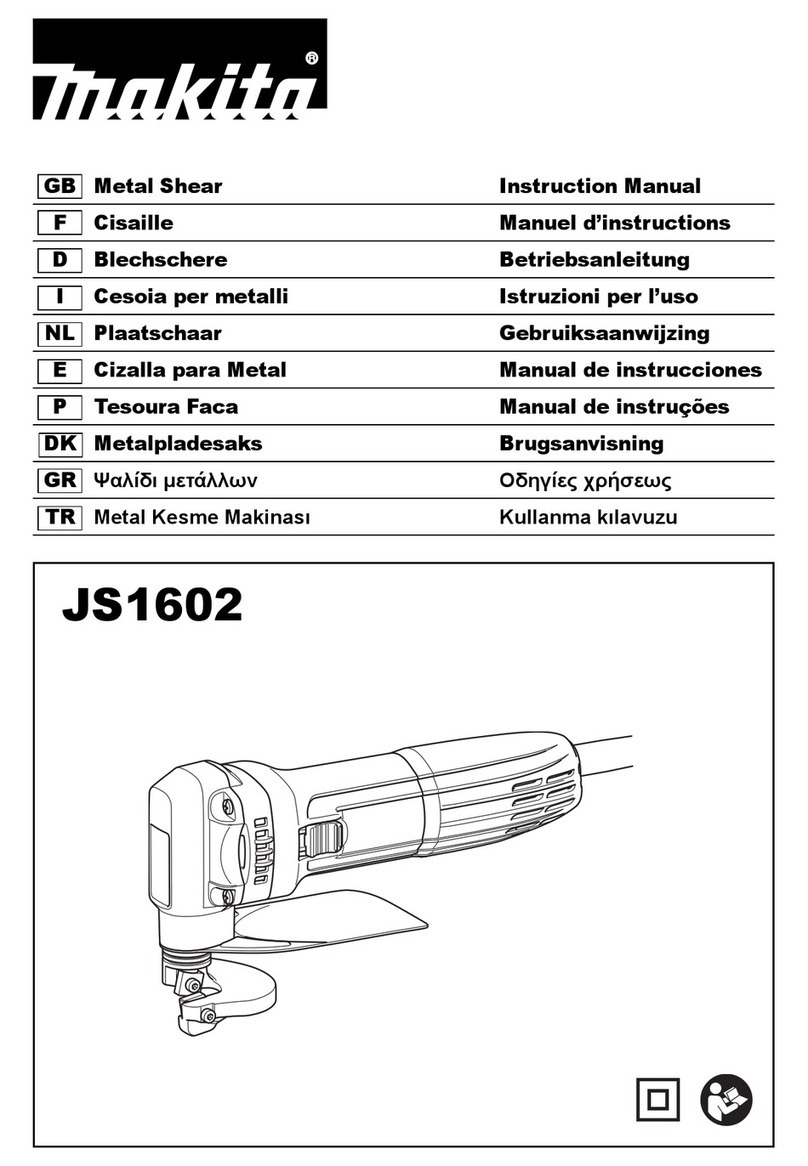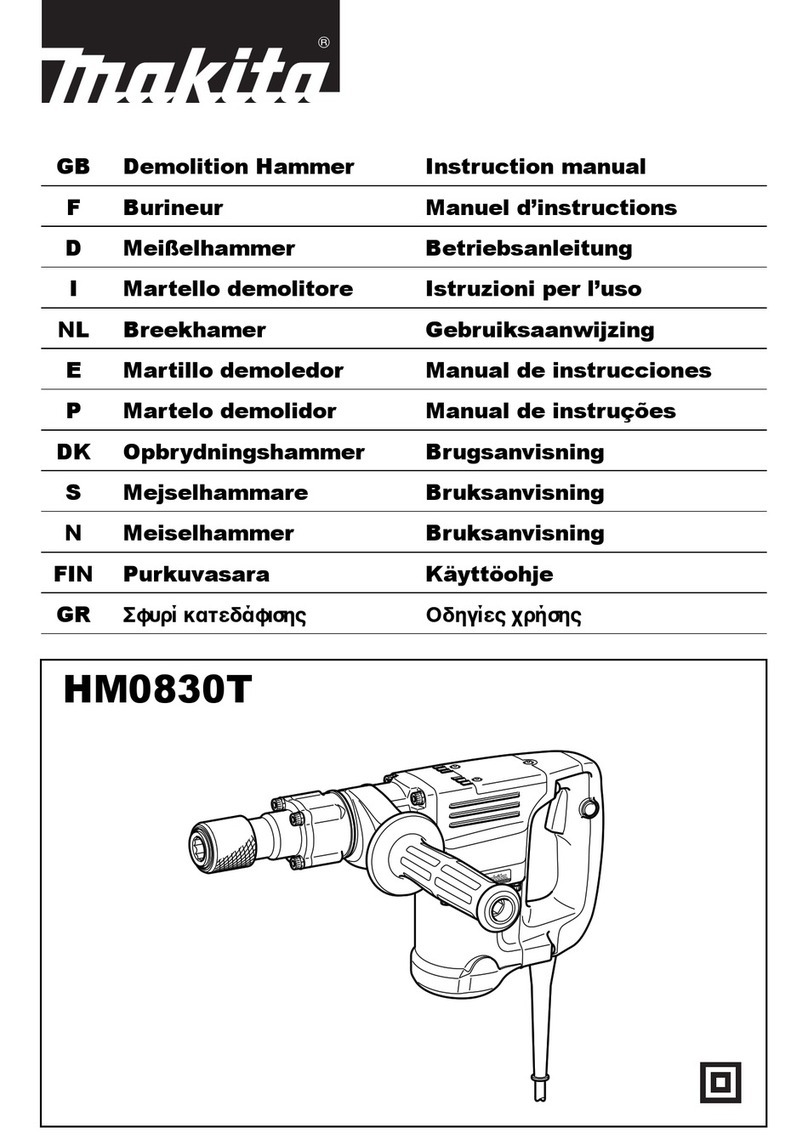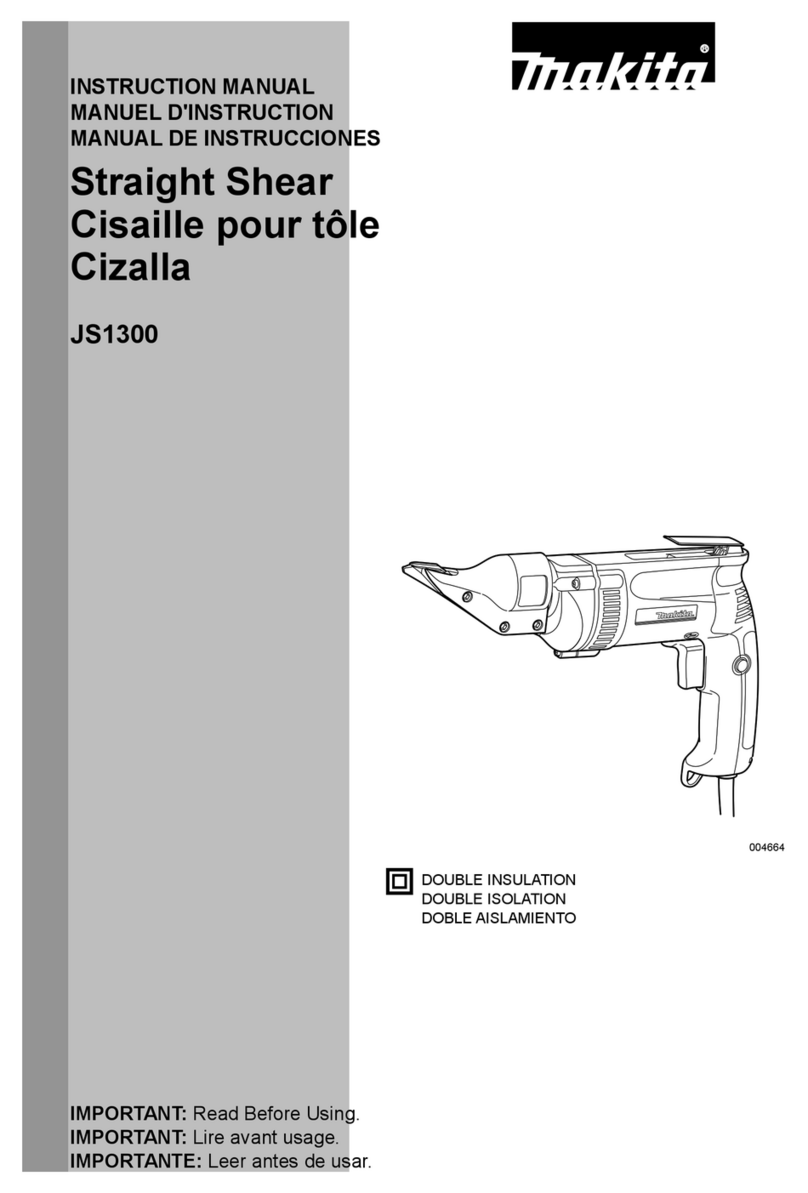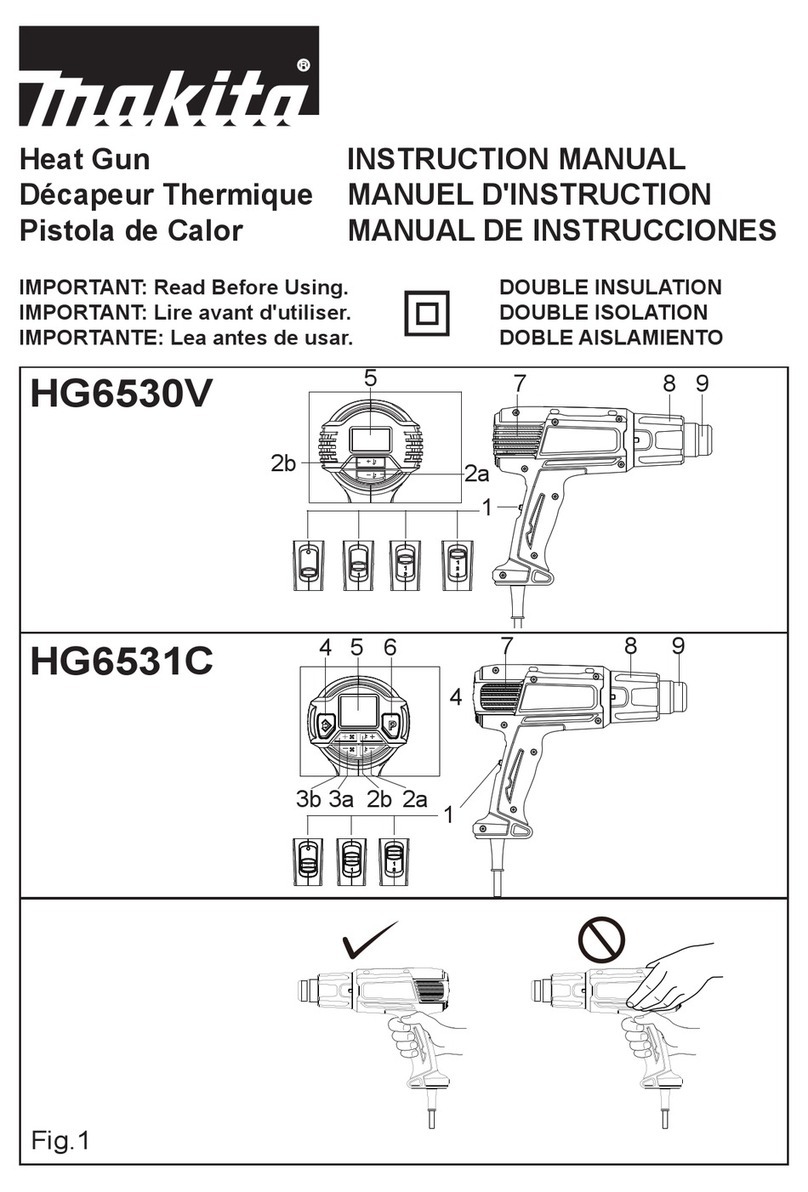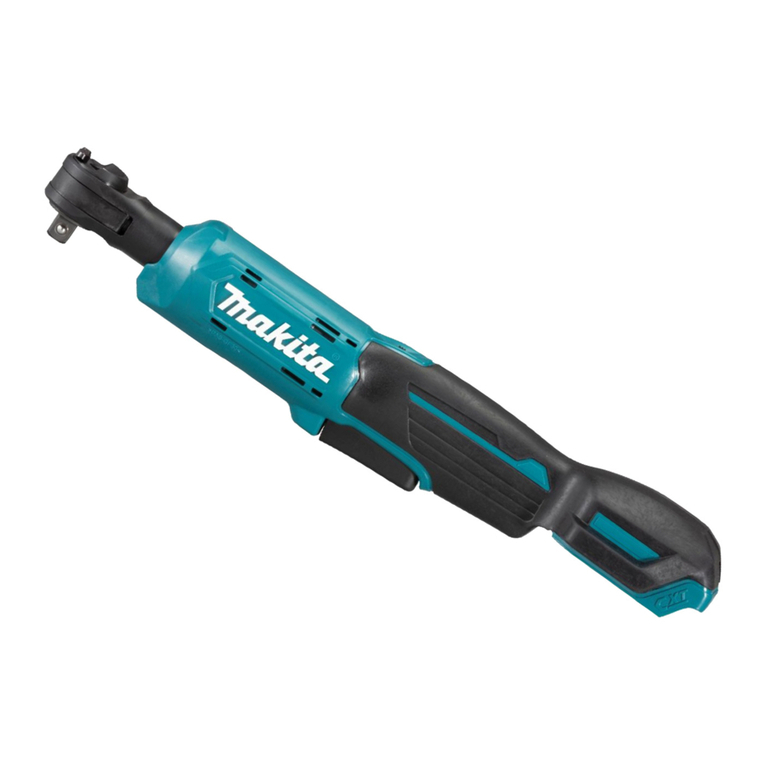
24
2. Neem de accu niet uit elkaar.
3. Als de gebruikstijd van een opgeladen accu aan-
zienlijk korter is geworden, moet u het gebruik
ervan onmiddellijk stopzetten. Voortgezet
gebruik kan oververhitting, brandwonden en
zelfs een ontploffing veroorzaken.
4. Als er elektrolyt in uw ogen is terechtgekomen,
spoel dan uw ogen met schoon water en roep
onmiddellijk de hulp van een dokter in. Elektrolyt
in de ogen kan blindheid veroorzaken.
5. Voorkom kortsluiting van de accu:
(1) Raak de accuklemmen nooit aan met een
geleidend materiaal.
(2) Bewaar de accu niet in een bak waarin
andere metalen voorwerpen zoals spijkers,
munten e.d. worden bewaard.
(3) Stel de accu niet bloot aan water of regen.
Kortsluiting van de accu kan oorzaak zijn van
een grote stroomafgifte, oververhitting, brand-
wonden, en zelfs defecten.
6. Bewaar het gereedschap en de accu niet op
plaatsen waar de temperatuur kan oplopen tot
50°C of hoger.
7. Werp de accu nooit in het vuur, ook niet wanneer
hij zwaar beschadigd of volledig versleten is. De
accu kan namelijk ontploffen in het vuur.
8. Wees voorzichtig dat u de accu niet laat vallen
en hem niet blootstelt aan schokken of stoten.
9. Gebruik nooit een beschadigde accu.
BEWAAR DEZE VOORSCHRIFTEN
Tips voor een maximale levensduur van de accu
1. Laad de accu op voordat hij volledig ontladen is.
Stop het gebruik van het gereedschap en laad de
accu op telkens wanneer u vaststelt dat het ver-
mogen van het gereedschap is afgenomen.
2. Laad een volledig opgeladen accu nooit opnieuw
op. Als u de accu te veel oplaadt, zal hij minder
lang meegaan.
3. Laad de accu op bij een kamertemperatuur tus-
sen 10°C en 40°C. Laat een warme accu afkoelen
alvorens hem op te laden.
4. Laad de accu zeker elk half jaar een keer op, ook
als u deze geruime tijd lang niet gebruikt.
BESCHRIJVING VAN DE FUNCTIES
LET OP:
• Zorg altijd dat het gereedschap is uitgeschakeld en de
accu ervan is verwijderd alvorens de functies op het
gereedschap af te stellen of te controleren.
Installeren of verwijderen van de accu (Fig. 1)
• Schakel het gereedschap altijd uit alvorens de accu te
installeren of te verwijderen.
• Om de accu uit het gereedschap te halen, verschuift u
de knop op de voorkant van de accu en trekt u de accu
eraf.
• Om de accu te installeren, doet u de tong op de accu
overeenkomen met de groef in de behuizing en dan
schuift u de accu erin. Schuif de accu zo ver mogelijk
erin totdat deze op zijn plaats vastklikt. Als u de rode
aanduiding boven de knop kunt zien, is ze niet volledig
vergrendeld. Breng de accu dan steviger aan zodat de
rode aanduiding niet meer zichtbaar is. Als u dit niet
doet, kan de accu per ongeluk eruit vallen en uzelf of
andere personen in uw omgeving verwonden.
• Probeer nooit om de accu met geweld te installeren.
Als de accu er niet gemakkelijk ingaat, betekent dit dat
u hem niet op de juiste wijze erin steekt.
Accubeveiligingssysteem (lithium-ionenaccu met
een stermarkering) (Fig. 2)
Lithium-ionenaccu’s met een stermarkering zijn voorzien
van een beveiligingssysteem. Dat kan automatisch de
stroomtoevoer afsluiten om de levensduur van de accu te
verlengen.
Het gereedschap kan tijdens gebruik automatisch stop-
pen wanneer het gereedschap en/of de accu aan één
van de volgende omstandigheden wordt blootgesteld:
• Overbelasting:
Als het gereedschap wordt gebruikt op een manier
die een abnormaal hoge stroomsterkte vergt.
In dat geval laat u de trekschakelaar van het gereed-
schap los en verhelpt u de oorzaak van de overbe-
lasting. Vervolgens drukt u de trekschakelaar weer
in om het gereedschap te herstarten.
Als het gereedschap niet start, kan de accu overver-
hit zijn. In dat geval laat u de accu even afkoelen
voordat u de trekschakelaar opnieuw indrukt.
• Onvoldoende accuspanning:
Als de resterende accuspanning onvoldoende is, zal
het gereedschap niet starten. In dat geval verwijdert
u de accu en laadt u die opnieuw op.
Werking van de trekschakelaar (Fig. 3)
LET OP:
• Alvorens de accu in het gereedschap te plaatsen, moet
u altijd controleren of de trekschakelaar juist werkt en
bij loslaten naar de “OFF” positie terugkeert.
Om het gereedschap te starten, drukt u gewoon de trek-
schakelaar in. Oefen meer druk uit op de trekschakelaar
om het toerental te vermeerderen. Om het gereedschap
te stoppen, de trekschakelaar loslaten.
Aanzetten van de voorlamp (Fig. 4)
LET OP:
• Kijk niet direct in het lamplicht of in de lichtbron.
Druk de trekschakelaar in om de lamp aan te zetten. De
lamp blijft branden zolang als de trekschakelaar wordt
ingedrukt.
De lamp gaat 10 tot 15 seconden nadat de aan/uit-scha-
kelaar is losgelaten automatisch uit.
OPMERKING:
• Gebruik een droge doek om vuil op de lamp eraf te
vegen. Pas op dat u geen krassen maakt op de lamp-
lens, omdat de verlichtingssterkte daardoor kan ver-
minderen.
Werking van de omkeerschakelaar (Fig. 5)
Dit gereedschap heeft een omkeerschakelaar voor het
veranderen van de draairichting. Druk de omkeerschake-
laar in vanaf zijde A voor rechtse draairichting, of vanaf
zijde B voor linkse draairichting.
Wanneer deze omkeerschakelaar in de neutrale stand
staat, kan de trekschakelaar niet worden ingedrukt.
